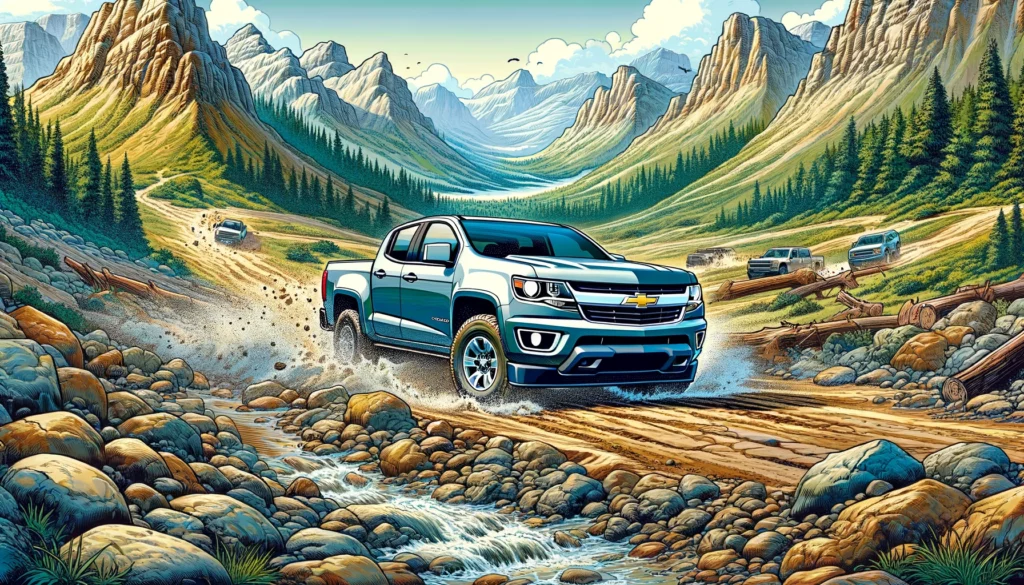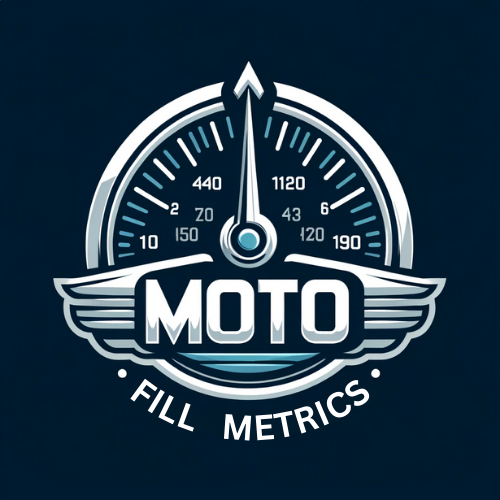
The Chevy Colorado was introduced in 2004 as a replacement for the S-10, marking a significant entry into the mid-size pickup truck segment. As a result, the Chevy Colorado gas tank size had to reflect this significant change.
The Chevy Colorado has a gas tank size of 21.4 gallons across all trim variations from 2020-2024. 19 gallon tanks can be found in models from the early 2000’s.
The Colorado found its home in the pickup market by appealing to both people that needed the towing ability of a truck and to people that wanted to commuter vehicle that didn’t chug fuel like a frat guy on spring break.
Fuel Tank Size by Year
For the last several years, the Colorado had kept that consistent fuel tank size of 21.4 gallons.
| Year | Trim | Tank Capacity (gallons) |
|---|---|---|
| 2024 | Base, WT, LT, Z71, ZR2 | 21.4 |
| 2023 | Base, WT, LT, Z71, ZR2 | 21.4 |
| 2022 | Base, WT, LT, Z71, ZR2 | 21.4 |
| 2021 | Base, WT, LT, Z71, ZR2 | 21.4 |
| 2020 | Base, WT, LT, Z71, ZR2 | 21.4 |
Fuel Efficiency and Range
- 2024 Models: Fuel efficiency of about 20 MPG. You can expect a range of approximately 420 miles.
- 2022-2023 Models: Similar efficiency and range to the 2024 models, ensuring consistent performance.
Older Models
2010-2019
At the start of the 20-teens, the Colorado had a gas tank size of 19 gallons across all trims. Chevy decided to take a break from production but came roaring back in 2015 with a tank capacity of 21 gallons.
| Year | Trim | Tank Capacity (gallons) |
|---|---|---|
| 2019 | All Trims | 21 |
| 2018 | All Trims | 21 |
| 2017 | All Trims | 21 |
| 2016 | All Trims | 21 |
| 2015 | All Trims | 21 |
| 2014 | Not Available | – |
| 2013 | Not Available | – |
| 2012 | All Trims | 19 |
| 2011 | All Trims | 19 |
| 2010 | All Trims | 19 |
During the years 2010-2012, the Chevy Colorado maintained a consistent gas tank size of approximately 19 gallons across all trims.
This capacity was typical for mid-size trucks of that era balancing the need for reasonable range without excessively increasing the vehicle’s weight or sacrificing cargo space.

After the Production Pause
Chevrolet paused the production of the Colorado for the U.S. market and then reintroduced a completely redesigned model in 2015. This revamped model had a gas tank size that increased to 21 gallons for all trims.
This change likely reflects several key factors:
- Improved Fuel Efficiency: Advances in engine technology and vehicle design made it possible to offer a larger tank without significantly impacting the vehicle’s overall efficiency. This would be especially beneficial for the newer models’ increased capabilities, including towing and off-road performance.
- Increased Range Expectations: As the mid-size truck market grew more competitive, offering a larger gas tank could have been a strategic move to meet or exceed consumer expectations for driving range, reducing the frequency of refueling stops for owners.
- Market Positioning: With the reintroduction in 2015, Chevrolet aimed to firmly position the Colorado as a leading option in the mid-size truck segment. Enhancing features like gas tank size could have been part of a broader strategy to appeal to a wider range of buyers, including those using their trucks for work, recreation, and everyday driving.
2000-2009
Throughout its early production years from 2004 to 2009, the Chevy Colorado maintained a consistent gas tank size of 19 gallons across all trims. This consistency reflects Chevrolet’s strategy at the time of entering and stabilizing its position within the mid-size truck market.
| Year | Trim | Tank Capacity (gallons) |
|---|---|---|
| 2009 | All Trims | 19 |
| 2008 | All Trims | 19 |
| 2007 | All Trims | 19 |
| 2006 | All Trims | 19 |
| 2005 | All Trims | 19 |
| 2004 | All Trims | 19 |
The choice of a 19-gallon tank was likely influenced by several factors:
- Balance Between Range and Efficiency: For a mid-size trucks, a 19-gallon tank provides a balance between a decent driving range and good fuel efficiency. This size is adequate for both daily use and moderate towing, which are typical for vehicles in this class.
- Market Positioning and Consumer Expectations: When the Colorado was introduced, it was entering a competitive segment with established players. The choice of tank size would have been a factor in ensuring the truck met consumer expectations for fuel economy and range.
- Regulatory: Vehicle fuel tank design decisions are influenced by regulatory requirements for safety and emissions.
- Design Considerations: The need to optimize space use within the vehicle’s chassis is also a consideration. The space allocated for the fuel tank needs to balance with other design priorities, including cabin space and cargo capacity.

Impact of Towing on Fuel Efficiency
Towing can significantly impact the fuel efficiency of the Chevy Colorado. This is due to the additional weight and aerodynamic drag, leading to increased fuel consumption.
When towing, the engine operates under higher load conditions for extended periods, which reduces its efficiency.
The extent of the impact on fuel efficiency depends on several factors, including:
- Weight of the Load
- Terrain
- Driving Conditions
Light Loads (up to 2,000 lbs)
Towing light loads, such as small trailers or a jet ski, can have a minimal to moderate impact on the Chevy Colorado’s fuel efficiency.
While the engine experiences increased demand, modern engines and transmissions are designed to handle light towing without significant reductions in fuel economy.
However, drivers may still notice a slight decrease in miles per gallon (MPG) due to the extra weight and drag. This is especially true when driving at highway speeds where aerodynamic resistance plays a more significant role.
Medium Loads (2,001 to 5,000 lbs)
As the weight of the towed load increases to medium levels, including small boats, medium-sized trailers, or a camper, the impact on fuel efficiency becomes more pronounced.
The engine works harder to maintain speed and acceleration, particularly on inclines or rugged terrain, leading to higher fuel consumption.
For the Chevy Colorado, which is capable of towing such loads, drivers should anticipate a noticeable decrease in MPG, emphasizing the importance of efficient driving habits and proper vehicle maintenance to mitigate these effects as much as possible.
Heavy Loads (5,001 lbs and above)
Towing heavy loads, approaching or maximizing the Colorado’s towing capacity, presents the most significant challenge to fuel efficiency.
Heavy-duty towing, such as large campers, horse trailers, or commercial equipment, demands maximum output from the engine and transmission. This leads to substantially higher fuel consumption rates.
The increased strain not only affects MPG but can also lead to more frequent stops for fuel, affecting travel time and costs.
When towing heavy loads, it’s crucial for drivers to plan their routes with fuel efficiency in mind, considering factors like avoiding steep grades and maintaining steady speeds.
Tips for Maximizing Fuel Efficiency While Towing
- Proper Vehicle Preparation: Ensure the Colorado is well-maintained. Particularly when it comes to tire pressure, engine tune-ups, and fluid levels.
- Load and Weight Distribution: Distributing the weight of the load and ensuring it does not exceed the vehicle’s towing capacity.
- Steady Driving: Maintain a consistent speed and use cruise control when possible. Sudden accelerations and braking can significantly increase fuel consumption.
- Aerodynamics: When possible, choose trailers and loads that offer less aerodynamic drag. Consider using aero-efficient trailers and accessories to reduce resistance.

Frequently Asked Questions
Can I increase the fuel tank size of my Chevy Colorado?
While aftermarket options exist, it’s essential to consider the vehicle’s balance, warranty, and legality of such modifications.
How often should I refuel my Chevy Colorado to maintain optimal performance?
You should refuel once your tank reaches a quarter full. This will help you to avoid potential issues with fuel quality or delivery within the tank.
Does driving style affect fuel efficiency in the Chevy Colorado?
Aggressive driving and excessive idling can reduce fuel efficiency. Maintaining steady speeds and using cruise control can help maximize it.





Leave a Reply